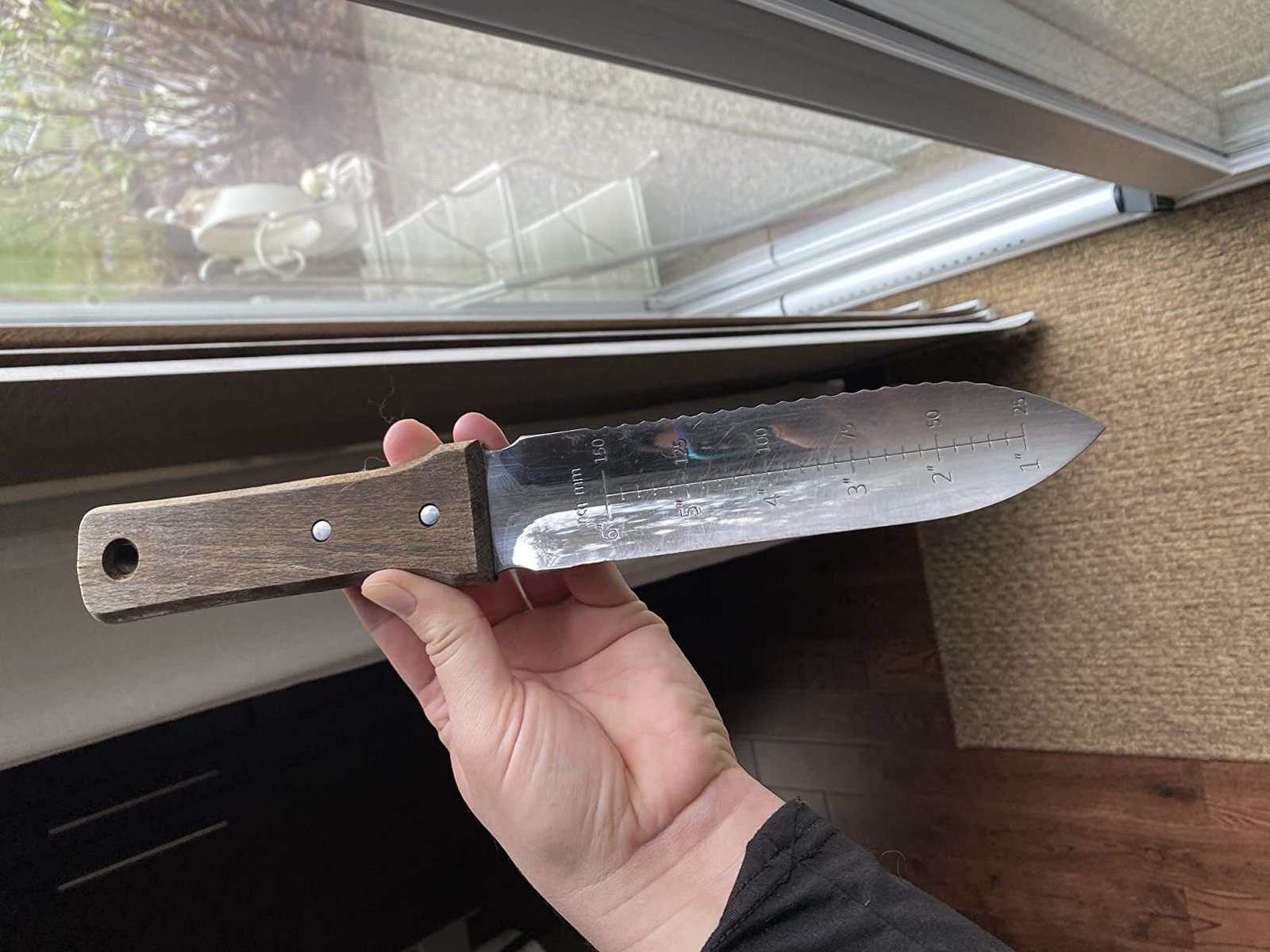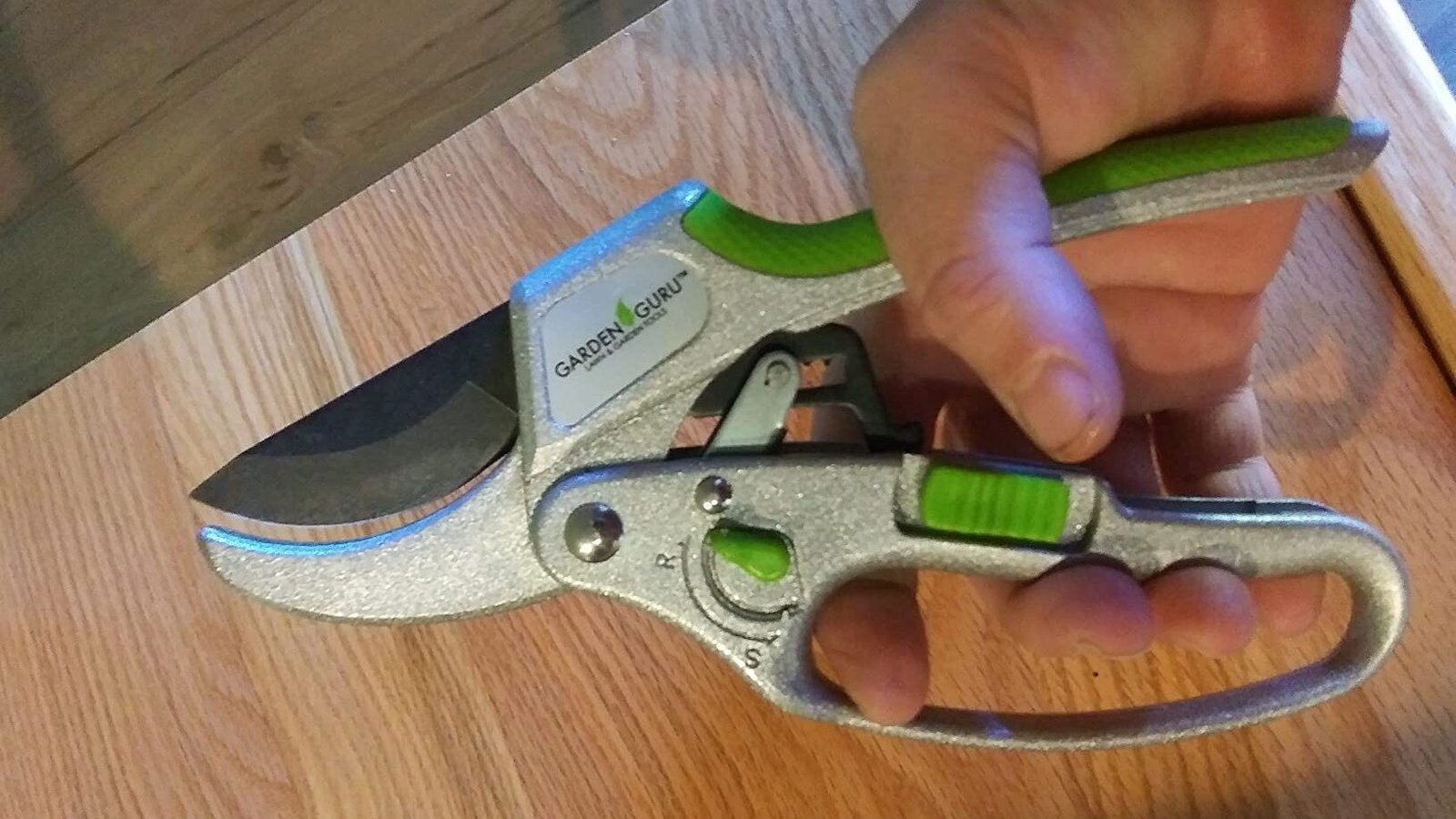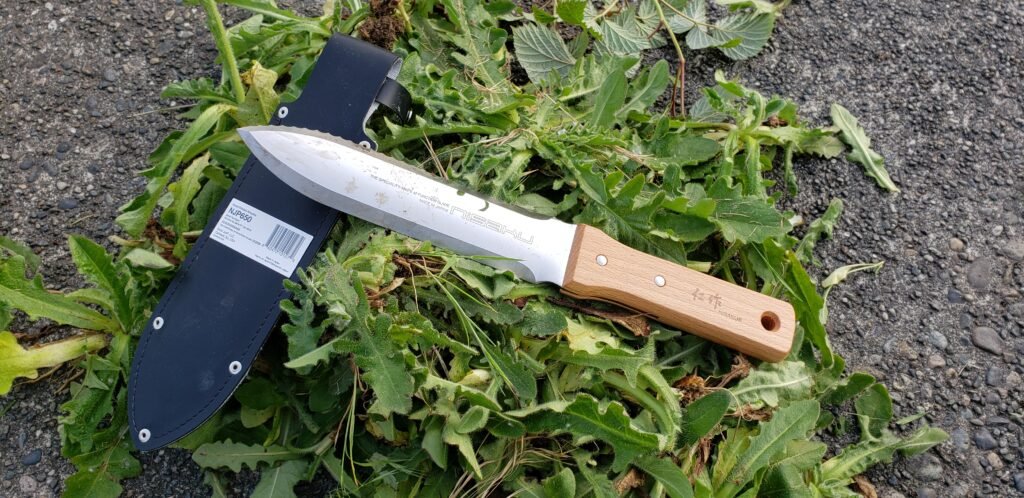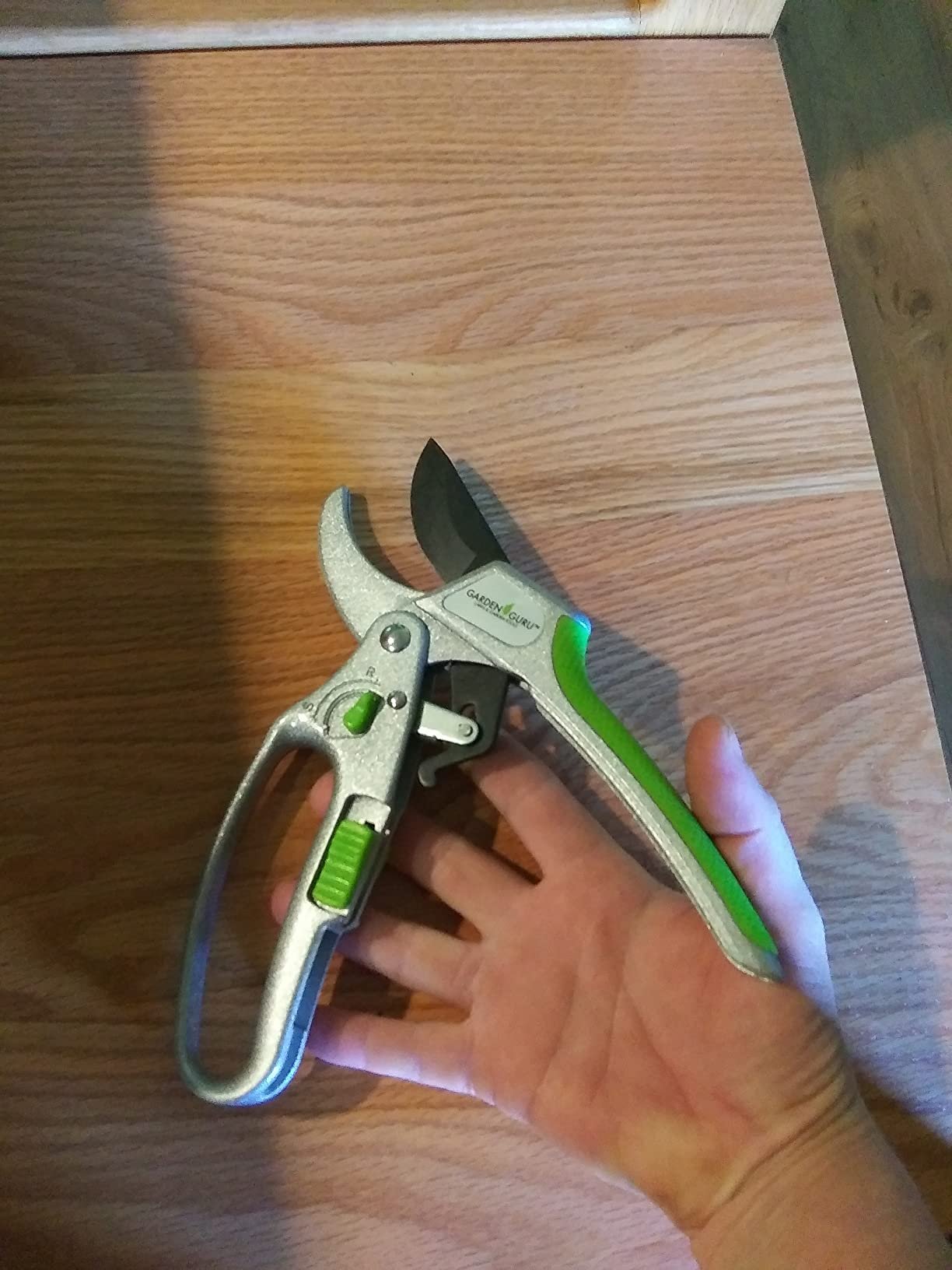Mastering the Blades: A Guide to Using Pruning Knives and Hori Hori Knives
Every garden flourish when it is given a little TLC which usually requires meticulous pruning and strategic planting. But making clean cuts and effective results requires the appropriate tools. The Pruning Knives and Hori Hori Knives, two indispensable tools in a gardener’s arsenal.
This article will arm you with the skills and confidence to handle these blades efficiently. We’ll explore how to properly use a pruning knife and examine the numerous applications of the Hori Hori knife, making sure your garden is flourishing with every cut and slash.
The Art of Pruning: Using a Pruning Knife Like A Pro
Pruning goes beyond taking branches off. It’s a deliberate art which promotes healthy growth of plants as well as stimulates flowering and enhances the overall appearance. This is how you can utilize a pruning tool for best outcomes:
Safety First:
- Wear gloves at all times to shield the hands against thorns as well as sharp edges.
- Make sure your pruning tool is sharp. A dull blade could break stems, which makes them more susceptible to infection.
- Make sure the blade is directed towards the downwards side when not in use.
- Cut the wood at an angle, and then slope towards the downwards, away from the branch or bud you wish to keep.
Pruning Techniques:
- cuttings for Heading: used to reduce branches, or limit growth. Cut the bud just over an outward-facing bud.
- Thinning Cuts: Cuts off entire branches to increase the circulation of air and allow for light to penetrate. Cut around the collar of the branch the swollen, slightly bumpy area between the branch and its main stem.
- Deadheading Eliminates flowers with a deadheading to stimulate new blooms. Cut just over the healthy leaves.
- Suckering Eliminates unwanted sprouts sprouting from the root of the plant. Cut the roots to a level to the ground.

Pruning Different Plant Types:
- The roses Cut roses the latter part of winter or in early spring, before the new growth begins to appear. Cuts for headings are used to reduce long stems, and to remove dead or rotting wood.
- Shrubs Pruning methods vary dependent on the kind of shrub. Certain types of shrubs benefit from thinned cuts to improve air circulation, whereas others require cutting off the head to keep the exact shape.
- trees: The young trees may need formal pruning in order to create an enduring structure. Older trees may require thinning cuts to eliminate dead branches or encourage new growth.
- Herbs and vegetables: Regularly pinch off flowers on herbs to encourage growth of foliage. For vegetables, trim in accordance with your specific requirements – like taking off suckers on tomato plants to increase the growth of fruits.
Read More Posts: Smarttoolbuddy
The Multifaceted Marvel: Mastering the Hori Hori Knife
The hori hori knife an iconic Japanese gardening marvel is much more than an instrument for digging. It’s versatility covers various tasks that make it a great garden partner. Here’s how you can maximize the use of this distinctive knife:
- Digging This blade easily cuts through soil, which makes it a perfect tool for digging holes for planting for transplanting seedlings or division of perennials. Use a sawing motion on the blade to break up the soil.
- Growing: This pointed end makes it easier to create the perfect holes for planting bulbs or seeds, as well as smaller plants.
- Root Management Sharp blades may break off roots that have become stubborn while digging or transferring.
- Seeding Utilize the blade’s straight edges to make small furrows to plant seeds.
- Weeding Its pointed end permits weeding that is targeted that penetrates deep into the soil in order to cut the weed roots and hinder regrowth.
- cutting: This serrated cutting blade can slice through branches with light girths or stems that are thick which makes it a useful tool for a variety of situations.
Table: Pruning Knife vs. Hori Hori Knife
| Feature | Pruning Knife | Hori Hori Knife |
| Primary Function | Cut precisely | Planting, digging and other tasks |
| Blade Type | Straight | A pointed tip with serrated edges |
| Ideal Uses | Pruning branches and deadheading flowers. Harvesting vegetables and herbaceous plants | Making planting holes, transferring seeds, dividing perennials, weeding and cutting roots, cutting branches with light |

Conclusion: Developing Confidence using the right blade
A pruning knife as well as the hori-hori knife are essential tools to the toolkit of any gardener. If you can master the right methods for each tool, you’ll be able to tackle different tasks related to pruning and planting with confidence.
Be aware that sharp blades and the right method ensure that you get clean cuts that promote healthy growth of your plants. So, when you next walk into the garden, take your trusted blades and prepare to create an oasis of growth!
Pruning Knives and Hori Hori Knives FAQs: Mastering Your Garden Blades
What exactly is the Hori Hori knife function?
The beauty of the Hori Hori is in the distinctive blade shape. The serrated edge functions as tiny saws, easily cutting through the soil. The pointed tip acts as an oversized pickaxe, which is ideal for digging holes in the ground and breaking up soil that has become compacted and cutting roots.
How do I utilize a Hori Hori knife in YouTube?
There are a lot of educational videos that demonstrate Hori Hori methods on YouTube. Here are some keywords to help you get started:
- “How to use a Hori Hori knife”
- “Hori Hori gardening tips”
- “Planting with a Hori Hori knife”
- “https://www.youtube.com/watch?v=P-yCM0iHpyM” This video provides a clear overview of various Hori Hori uses, from digging planting holes to weeding.
- “https://www.youtube.com/watch?v=P-yCM0iHpyM” This video demonstrates how to use the Hori Hori for planting, transplanting, and even cutting light branches.
How do I make a sharp Hori Hori Knife?
Keeping a razor-sharp Hori Hori is essential to maximize performance. Sharpening it can be accomplished using different methods:
- Stone for sharpening: A whetstone is an old-fashioned and efficient method to sharpen your blade. Use the correct techniques to sharpen your blade to get the best results.
- Sharpening Steel: A honing steel will help keep sharpness between sharpening sessions.
- Electronic sharpener A sharpener that is electric is a fast and efficient option, but be sure that it’s appropriate for Hori blade material.
How can you make use of pruning?
Pruning is the process of removing specific branches or stems of plants to promote healthy growth, regulate dimensions and shape and enhance the production of fruit or flowers. There are a variety of pruning methods which are each suitable for specific objectives:
- Cuttings for head: Shorten branches by cutting just above a bud that faces outwards.
- Thin cut: Remove entire branches to increase the circulation of air and allow light to penetrate.
- Deadheading Eliminate flowers with a deadheading to stimulate new flowers.
- Suckering Get rid of any shoots that are growing at the base of the plant.
How do I utilize pruning shears step-by-step one step?
Pruning shears can be a different tool from a pruning knife however, here’s a comprehensive instruction on how to use them:
- Security First Put on gloves. Also, make sure the shears are razor-sharp.
- Locate your Cut Point Find the stem or branch you wish to take away.
- The Shears should be positioned: Make the cut near a bud or the point at which the branch connects to its main stem.
- Clean Cut Cut cleanly by cutting only one time, trying to avoid breaking the stem.
- Angled Cut For branches that are thicker create an angled cut that slopes downwards from the branch or bud you wish to keep.

How do you utilize a gardening knife?
A garden knife can be an extremely versatile tool that can be used for a variety of tasks:
- Pruning Small branches, or delicate cuts in which pruning shears are too heavy.
- Harvesting cutting vegetables and flowers, and herbs.
- The process of weeding involves cutting weeds near the soil.
- Dividing perennials cutting through the roots in order to divide plants.
Be aware that sharp blades and the correct technique are crucial to operating your garden knife in a safe and efficient manner.
What are the methods of pruning?
Pruning goes beyond taking branches off. It’s a carefully planned procedure that encourages healthy growth of plants, encourages blooming, and enhances the aesthetics of your garden. Here are a few important points to be aware of:
- Safety first: Use gloves, and ensure that the blade is sharp to prevent stems from being crushed.
- Cut cleanly: Use angled cuts that slope downwards, away from the branch or bud you would like to keep.
Types of Pruning Cuts:
- Cutting Headings Cut branches short or cut back expansion by cutting just over an upward-facing buds.
- Cuttings that thin: Cut off entire branches in order to increase circulation of air and light. Cut the collar of the branch the slight swelling between the branch and its main stem.
- Deadheading Get rid of flowers with a deadheading to promote the growth of new blooms. Cut just over an established set of leaves.
- Suckering Get rid of unwanted sprouts that are growing at the base of an tree by cutting it to the ground.


Related Blogs
The Top 10 Best Litter Box for Multiple Cats
5 Best Dry Cat Food for Indoor Cats 2024
Affordable Bluetooth Projector for Gaming: The Best in 2024
The Best Soundbar for Music and Movies for Home Threaters
Stay Powered Up: The Best Portable Charger for iPhone 15 in 2024
The iPhone 15 Pro Max New Features: Comprehensive Features
Liquid Screen Protector vs Tempered Glass: Which is better in 2024
What is a Monkey Wrench: Complete Details
Guide to Cleaning Your Gatorade Bottle The Proper Way
How To Sharpen Garden Hoe: Real Guide to the problem
How to Use a Tack Hammer Nail it Every Time
Easy Ways on How to Clean Garden Tools at Home
Changing a Garden Cart Tire: Expert Hacks That Will Save You from $200+ in Repairs
How to Whisk Eggs: Easy Manual Techniques
Garden Fork Vs Pitchfork: Deciding Which Tool Will Meet Your Garden Needs
Conquering the Greens: How to Rake Artificial Grass
How Deep To Plant Daffodil Bulbs? A Simple Guide
How to Pick the Best Shovel for Digging in 2024
The best time to power rake your lawn
Why Your Kitchen Isn’t Complete Without an Acacia Cutting Board
How to Replace Trimmer Line in Bump Feed: Step-by-Step Guide
Perfect Make Matcha Without Whisk: The Ultimate Guide
10 Ways to Remove Snow from Driveway Without a Shovel: Innovative Snow Removal
The Ultimate Guide: How Many Wheelbarrows of Sand Per Bag of Cement
Don’t Make This Silly Mistake with Your 5 Uses of Garden Fork
Is a Spade and a Shovel the Same? Discover the Differences Here
Transform Your Garden with Stunning Garden Stake Ideas You’ll Love
The Best Home Gym Equipment you can get in 2024
The Best Home Gym Setups for Small Spaces
Shoot Like a Pro: The Best iPhone Filmmaking Kit
Are Bone Conduction Headphones Safe?